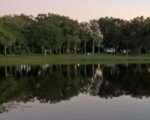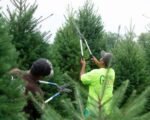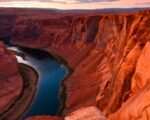A Colorado Springs resident, 62-year-old Joseph Aita, has been barred from visiting Yellowstone National Park for five years following a recent court decision. Aita’s punishment, which includes jail time, probation, and fines, stems from a prohibited venture into one of the park’s protected geothermal sites.
Protected Land Trespass Leads to Legal Consequences
On October 31, Joseph Aita was sentenced after he was found guilty of stepping off a designated trail and entering Canary Spring, a safeguarded area within the Mammoth Hot Springs region of Yellowstone. His wife, Celia Aita, and two children accompanied him on the excursion into the restricted zone, which is specifically marked to prevent damage to sensitive mineral deposits and natural formations.
Aita’s entry into this restricted area was taken seriously by federal authorities, who view such incursions as threats to the conservation of Yellowstone’s rare geothermal features. The U.S. Attorney’s Office of Wyoming, which led the prosecution, emphasized the importance of preserving natural resources like the unique mineral formations in Canary Spring.

Penalties: Jail, Probation, and a Significant Fine
As part of his sentence, Aita received seven days in jail and was placed on probation for five years. During this probation period, he is explicitly banned from setting foot in Yellowstone National Park. Additionally, he faces a $3,000 fine for damaging a mineral resource, as well as a mandatory $60 in court fees. The penalties underscore the legal system’s dedication to enforcing park rules to ensure the preservation of Yellowstone’s distinct ecosystem.
For many visitors, the park’s geothermal features, like Canary Spring, are among the most fascinating aspects of Yellowstone. However, authorities stress that maintaining the integrity of these areas requires strict adherence to park rules, including staying on designated trails to avoid damage. Aita’s case serves as a reminder that disregarding these rules has consequences.
Yellowstone’s Geothermal Sites: A Fragile Attraction
Yellowstone National Park is home to over 10,000 hydrothermal features, including hot springs, mudpots, geysers, and fumaroles, making it one of the most geothermally active areas in the world. Many of these features, such as Canary Spring, are delicate, and even minor disturbances can lead to long-term damage or alterations in their natural behavior.
Here’s a quick breakdown of what makes these sites so vulnerable:
- Temperature Sensitivity: High temperatures, sometimes reaching 199°F (93°C), can cause injury to people but are also extremely sensitive to human disturbances.
- Chemical Reactions: Introducing foreign materials or disrupting the mineral layers can interfere with the intricate chemical processes that create these unique formations.
- Environmental Impact: Altering the flow of water or introducing new microorganisms can permanently change the landscape, endangering other parts of the ecosystem.
The U.S. National Park Service spends significant resources on conservation, aiming to protect these natural wonders not only for today’s visitors but for future generations. Damage caused by individuals wandering off-trail may seem minor at the moment but can have cascading effects.
| Geothermal Feature | Description | Risks of Human Interaction |
|---|---|---|
| Hot Springs | Pools of superheated, mineral-rich water | Contamination, skin burns, resource depletion |
| Geysers | Hot springs with periodic eruptions | Disruption of flow, injury, degradation |
| Fumaroles | Openings emitting volcanic gases | Altering gas emissions, affecting air quality |
| Mudpots | Hot springs with boiling mud | Damage to microbial ecosystems |
The Importance of Following Park Guidelines
Park authorities have ramped up educational campaigns to inform visitors of the importance of staying on marked trails. Signage and pamphlets, as well as online resources, outline these guidelines in detail to ensure that all visitors are aware of what is allowed—and what is not. According to officials, most visitors respect these guidelines, but incidents like Aita’s trespass illustrate the occasional need for more severe enforcement actions.
Every year, Yellowstone attracts millions of visitors eager to see its unique geothermal features. However, human interaction with these sites, especially when rules are disregarded, can lead to fines, bans, or even jail time. With Aita’s case, authorities hope to underscore how vital it is for visitors to respect park guidelines and contribute to the protection of Yellowstone’s environmental heritage.
Past Incidents and Increased Vigilance in Yellowstone
While incidents of people venturing off-trail are relatively rare, Yellowstone has dealt with similar cases in the past. In recent years, park authorities have observed an uptick in issues related to off-trail activity, including damage to sensitive environments and even injuries. The park’s rangers and conservation teams have strengthened surveillance and education efforts to minimize such cases.
Authorities often share these stories as cautionary tales:
- In 2016, a tourist slipped and fell into a hot spring after stepping off a boardwalk, sustaining severe injuries.
- Another incident saw a group facing fines after drone usage in restricted zones, violating wildlife safety regulations.
- A high-profile case in 2019 involved a visitor carving initials into a delicate rock formation, leading to thousands of dollars in restoration costs.
These cases highlight the park’s fragile landscape and the impact that even a single misstep can have on both individuals and the environment. Park officials are hopeful that Aita’s case will serve as a preventive example for other visitors considering risky behaviors in Yellowstone.














